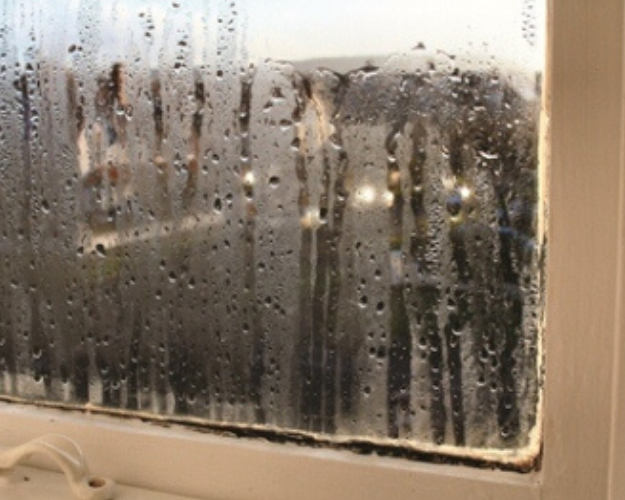
Preventing condensation is better than the cure
The Dangers of Damp and Mould
The dangers of damp and mould spores caused by condensation are very real. As winter approaches, social housing tenants living in poorly ventilated homes will be at risk of developing or worsening a range of allergies, from asthma to rhinitis.
Dealing With Complaints
Faced with energy price hikes and more severe winter weather, tenants are less likely to open windows and dry clothes outside, so the damage caused by condensation remains. As autumn approaches and the temperature drops, many Registered Social Landlords will start preparing for the onslaught of tenant complaints about damp walls, condensation on windows and the appearance of black mould on fabric, clothing and wallpaper.
Condensation dampness affects both new and older properties and is much more common than you might imagine. Excess moisture is produced simply by breathing and by everyday activities like bathing, cooking, washing and drying our clothes. An average family can produce up to four pints of water per day, and this moisture is absorbed into the air, where it migrates through the home and condenses on cool surfaces such as windows, mirrors, wall tiles and furniture.
For many RSLs, this problem comes around every year between autumn and spring, bringing visits from surveyors and damp assessors and costly repairs to the building fabric and decoration. Many will try to encourage their tenants to adopt lifestyle changes to lower the humidity level in the property: opening windows and closing doors in moisture-producing rooms, keeping the property warm to reduce cold spots, and not drying clothes inside. In reality, due to fuel poverty and more extreme weather, it is often difficult to enforce these changes. When outside temperatures plummet, activities that result in a loss of heat and increased fuel bills are quickly abandoned.



So What’s The Solution?
Trawling the internet for advice on tackling condensation will uncover a plethora of so-called cures, but be wary: many of these are simply short-term solutions that will mask or target only the cosmetic appearance of mould without actually dealing with the root of the problem. Anti-mould paint, dehumidifiers, cavity wall and loft insulation, draught-proofing and installing double glazing are just some steps suggested by retailers and suppliers. Some are incredibly costly, others are effective for tackling penetrating damp, but none will solve the condensation issue. It’s a matter of adequate ventilation. The most effective solution for properties badly affected by condensation dampness is a whole-home ventilation strategy called Positive Input Ventilation, sometimes referred to as Positive Pressurisation or PIV.
Ventilation manufacturer, Nuaire invented the technology over 40 years ago in conjunction with the North Eastern Gas Board, which sought a low-cost solution to clear condensation and humidity caused by sealed up chimneys and modern central heating systems. Today, PIV is the most popular method of whole home ventilation in the UK. Due primarily to its simple installation, while still providing the only known cure for condensation dampness and associated health issues caused by dust mites, mould spores, and other indoor pollutants.
